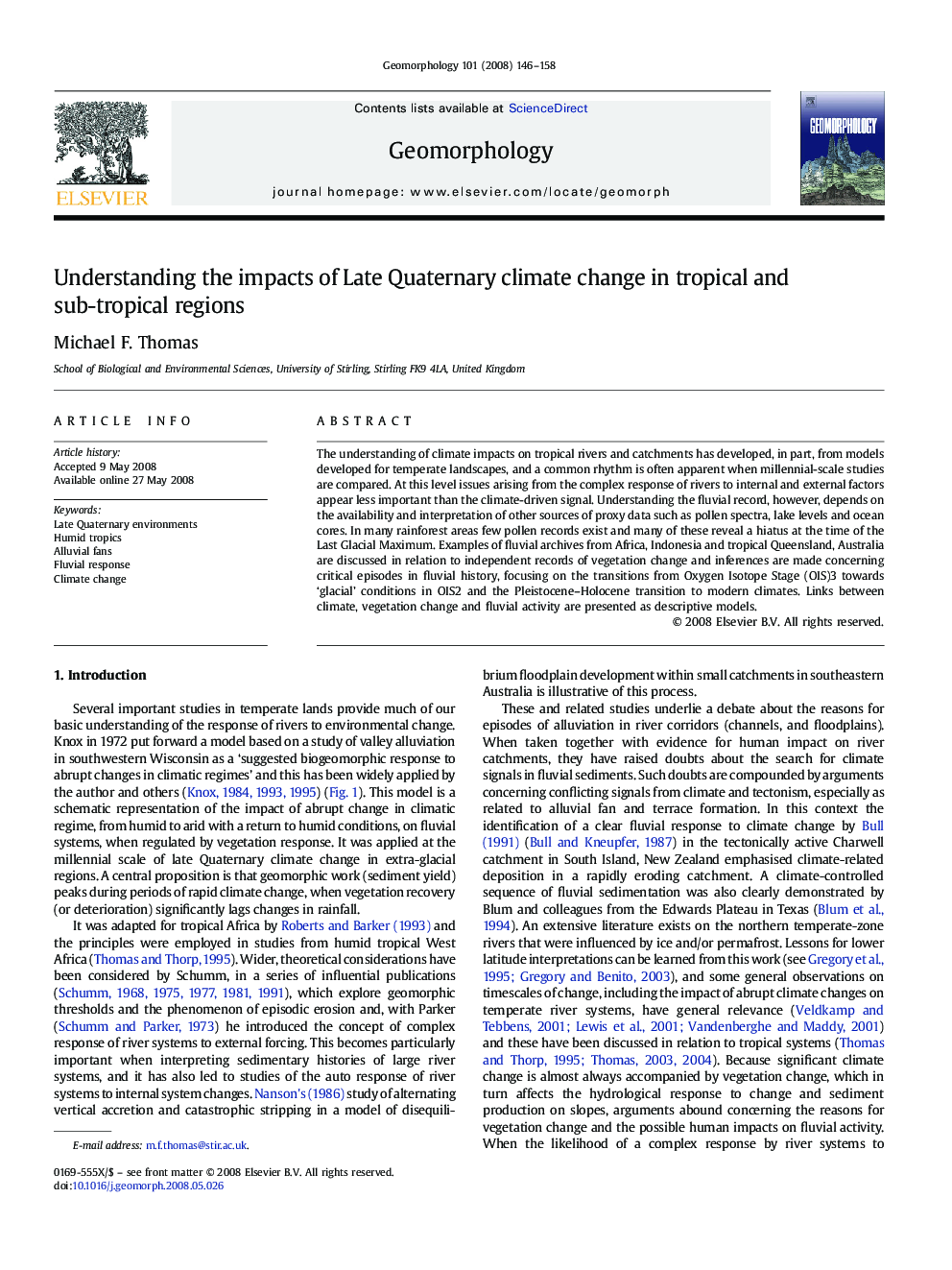| Article ID | Journal | Published Year | Pages | File Type |
|---|---|---|---|---|
| 4687000 | Geomorphology | 2008 | 13 Pages |
The understanding of climate impacts on tropical rivers and catchments has developed, in part, from models developed for temperate landscapes, and a common rhythm is often apparent when millennial-scale studies are compared. At this level issues arising from the complex response of rivers to internal and external factors appear less important than the climate-driven signal. Understanding the fluvial record, however, depends on the availability and interpretation of other sources of proxy data such as pollen spectra, lake levels and ocean cores. In many rainforest areas few pollen records exist and many of these reveal a hiatus at the time of the Last Glacial Maximum. Examples of fluvial archives from Africa, Indonesia and tropical Queensland, Australia are discussed in relation to independent records of vegetation change and inferences are made concerning critical episodes in fluvial history, focusing on the transitions from Oxygen Isotope Stage (OIS)3 towards ‘glacial’ conditions in OIS2 and the Pleistocene–Holocene transition to modern climates. Links between climate, vegetation change and fluvial activity are presented as descriptive models.
